Better public services
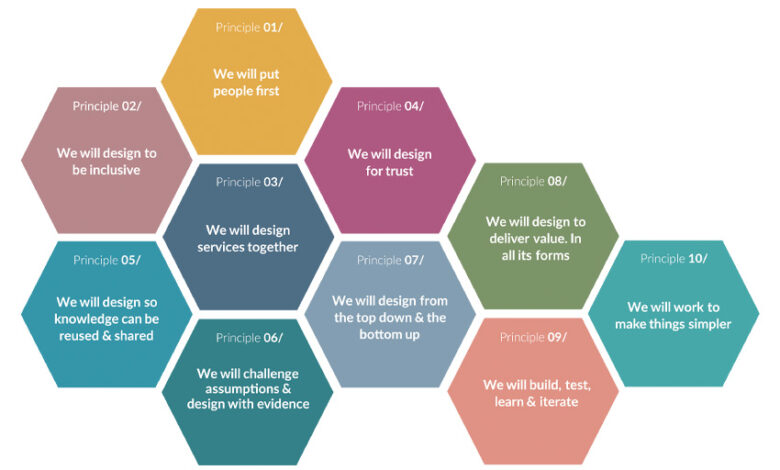
Following the publication of Better Public Services, DPENDPDR Assistant Secretary General Marianne Cassidy outlines progress on transformation of public services for better service delivery.
 Launched in May 2023, Better Public Services, the Public Service Transformation 2030 Strategy, sets an overarching vision for “inclusive, high quality and integrated public service provision that meets the needs, and improves the lives, of the people of Ireland”.
Launched in May 2023, Better Public Services, the Public Service Transformation 2030 Strategy, sets an overarching vision for “inclusive, high quality and integrated public service provision that meets the needs, and improves the lives, of the people of Ireland”.
The goal of the Department of Public Expenditure, NDP Delivery and Reform (DPENDPDR) is to serve the public interest through sound governance of public expenditure and by leading and enabling reform across the Civil and Public Service, explains Cassidy. Key to this is setting the vision for transformation for the next stage of public service reform, including the provision of tools, enablers, and supports for the sector.
Setting the context for transformation, Cassidy says: “It is clear that many of the major challenges we face such as climate change, homelessness, or health provision are cross-cutting and/or horizontal in nature. However, the way we organise as a public service to deliver in terms of the processes and structures we use tend to be quite vertical. Better Public Services is the framework to nurture and harness the transformation effort of the public service to work collaboratively to deliver tangible outcomes for the public, and to build trust in public institutions,” she explains.
The strategy aligns with Civil Service Renewal 2030 and Connecting Government 2030, and represents, for the first time, a coherent framework for transformation for the public service.
Cassidy says that the framework builds on the efforts and achievements of previous reform programmes, many of which focused on building internal capacity including for example digital infrastructure, the development of shared services, and procurement reform.
“Responding to the Covid-19 crisis underlined the agility, innovation, and commitment of the public service to adapt to meet the needs of customers and citizens. The next phase of transformation gives an opportunity to build on the progress to date and the momentum in accelerating reform during the public service response to the pandemic and position the public service to meet current and future challenges.”
The Public Service Transformation Framework, which is at the core of the strategy, comprises three central themes:
- digital and innovation at scale;
- workforce and organisation of the future; and
- evidence-informed policies and services designed for and with our public.
1. Digital and innovation at scale
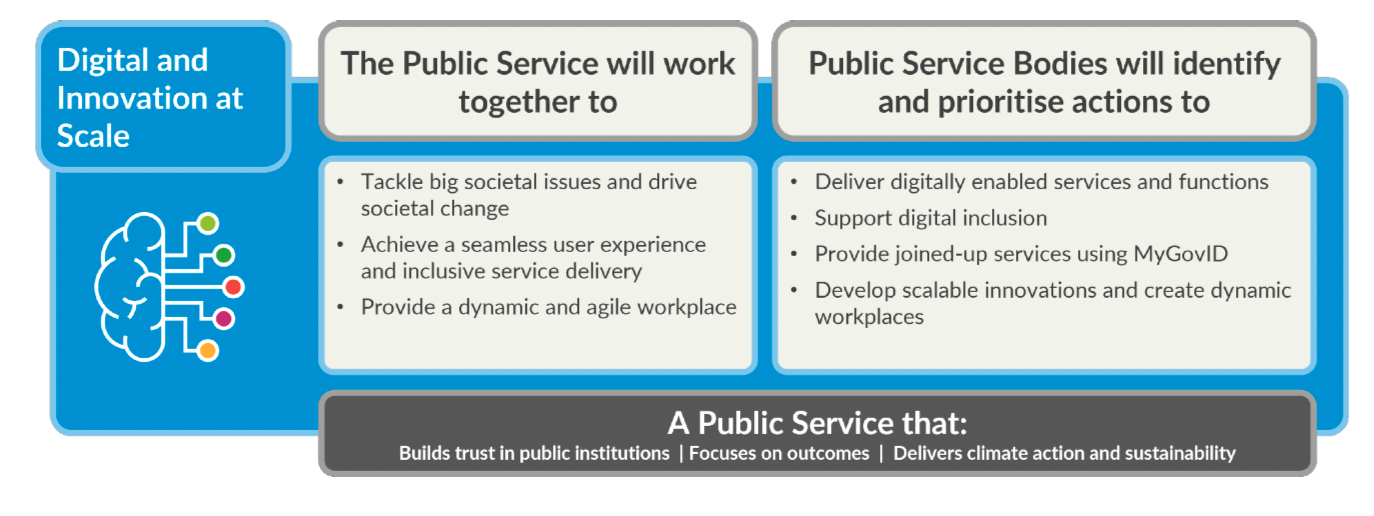
Cassidy explains that the framework is presented at two levels and provides the strategic direction of reform in the public service to 2030. On one level, the public service will collaborate on cross-cutting issues and the Public Service Leadership Board (PSLB) will play a key role on shared priorities. However, on a second level, individual public service bodies are central to achieving the ambition of the strategy and are asked to identify and prioritise actions that are contained in the framework.
“Public service bodies are also asked to have regard to the framework in their corporate strategies, align the delivery of their reform priorities in their business plans, and report on them in their annual reports,” the Assistant Secretary adds.
Cassidy says that the first pillar of the framework is aimed towards tackling big societal issues by re-engineering policies and service delivery to create a seamless user experience. “It is also about seizing the opportunity of digital to give us more integrated and inclusive frontline delivery, with a strong digital inclusion element and building on the progress already made on implementing Making Innovation Real, the Public Service Innovation Strategy”.
2. Workforce and organisation of the future
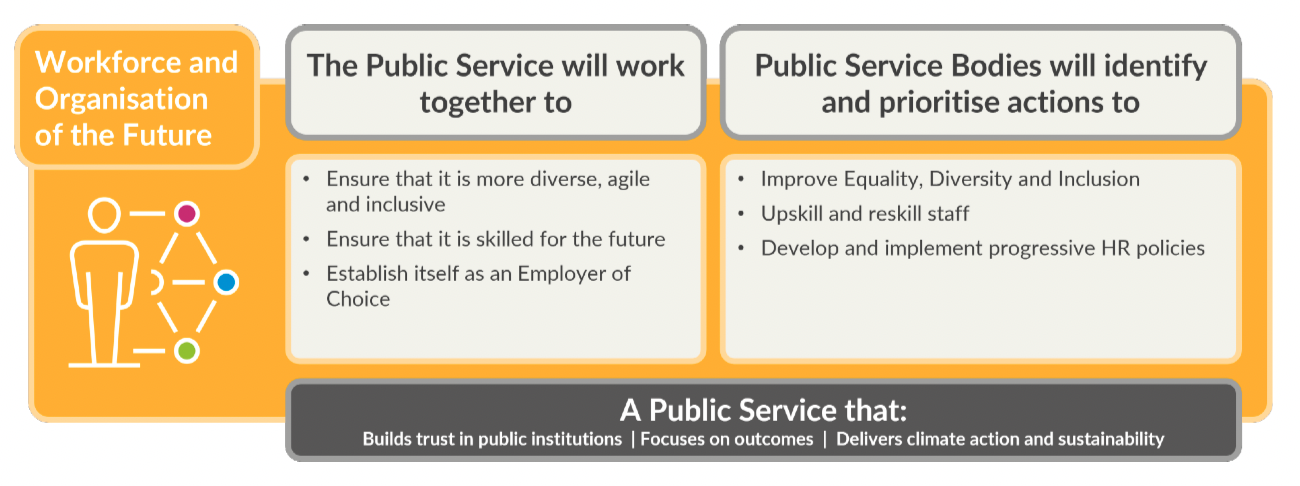
The second pillar of the framework, which relates to the workforce and organisation of the future, is a recognition that transformation will be impossible without the right people. “It is about having the right people, at the right time, and in the right place,” explains Cassidy. “As a public service we must ensure that we are reflective of the people we serve and to maximise the benefits of diversity within our public service. There is also a focus on our upskilling and reskilling of staff, while developing a new pipeline of talent and widening the recruitment pool for careers in the public service.”
3. Evidence-informed policy and services designed for and with our public
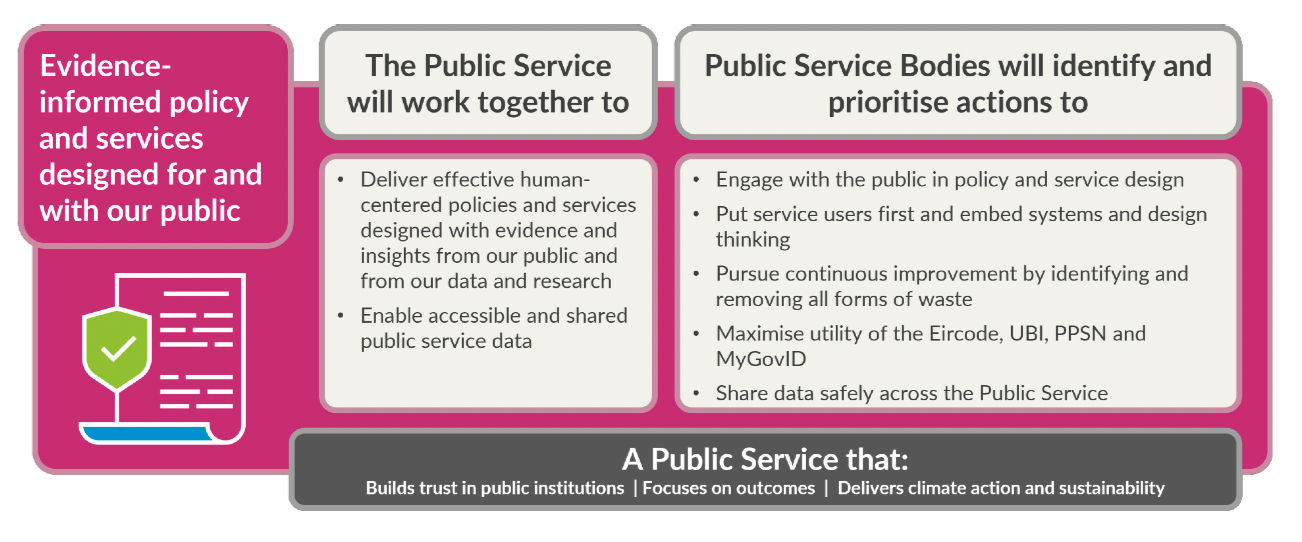
The third pillar, explains Cassidy, is about evidence-informed policy and services designed for and with our public. “It is about the delivery of effective human-centred policies and services, designed with evidence and insights from the public, and from our data and research.
“It is also about using the potential of data across our public and civil service by embedding the national data infrastructure and sharing information safely to improve the services we deliver to the public. Importantly, we are asking public bodies to embed systems and design thinking by putting service users first.”
Flagship projects
The strategy is focused on high-level outcomes which will help the public service to continuously improve the delivery of its services to the public. Cassidy outlines that the Department and the PSLB have recognised a requirement to drive some initiatives from the centre and have adopted a number of flagship projects.
Under digital and innovation at scale, the Assistant Secretary points to work by the Department and the Office of the Government Chief Information Officer (OGCIO) with various departments to re-engineer digital services around people’s life events. An iterative process to service design, involving users from the beginning of the process to identify and understand their needs, and challenges in the context of using that service, will be trialled.
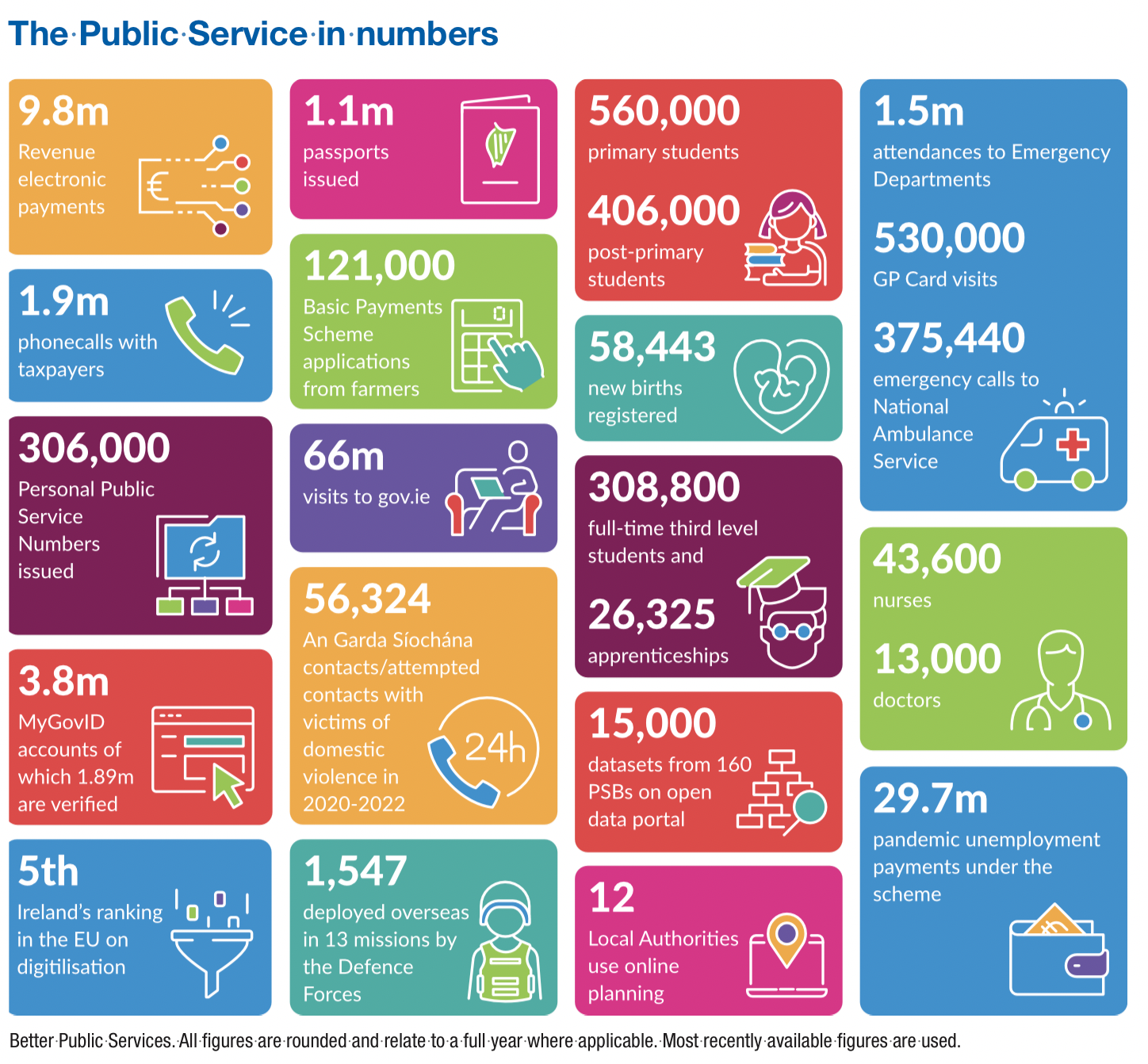
Under the workforce and organisation of the future pillar, DPENDPDR are working with the Department of Further and Higher Education, Research, Innovation and Science to create a pipeline of talent around critical skills by scaling the ICT apprenticeship model implemented in the civil service into a broader public service apprenticeship approach. A second project is the creation of a centre of excellence for learning and development, serving the wider civil and public service from within the Institute of Public Administration (IPA).
“This is about creating the collective capacity to have the skills required, by scaling learning from one project to the wider public sector and benefitting from the capability the IPA has developed,” says Cassidy.
A further flagship project is the development of a progressive HR policy, which will seek to remove barriers to the civil and public service, attract new people, and capitalise on the diversity of the country.
Cassidy says: “We are also working with colleagues from the Department of the Taoiseach, and the OECD to look at further building policy development capability with support from the European Commission’s Technical Support Programme”.
Service design
The Assistant Secretary describes a new approach to service design across the public sector as a “lynchpin” of transformation.
“It is about understanding the problems and working collaboratively with users to come up with a solution that meets their needs in terms of designing the right things and designing things right”.
In 2022, a prototype set of design principles for government were launched to encourage the public service to “embrace a new way of working, to incorporate powerful tools and techniques, and to deliver human-centric solutions to complex social issues”.
“The use of design principles provide the opportunity to trial a new approach to developing services by placing users at the centre of design of those services”.
Cassidy explains that the next step is for the development of an action plan to embed the use of the principles in the public service and to put a team in place to support implementation.
“Lessons in implementation can then inform the policy development process and better service delivery. Using systems thinking and operations management can help to put service users first in all decisions and actions where applicable. This will also support continuous improvement by identifying and removing all forms of waste from every process,” she concludes.





